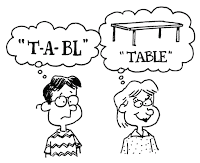What is a Behavior Intervention Plan (BIP)?

A Behavior Intervention Plan (BIP) is a plan that is designed to help improve or modify a behavior by addressing its cause. It is based on the results of a Functional Behavioral Assessment (FBA) which is used to determine the function of the behavior. This behavior must be observable and measurable - behaviors such as fighting, avoidance, interruptions, aggression, inappropriate comments, and excessive talking.
Why is it Important to Keep Data on Students' Behavior?
Once a behavior Intervention Plan is created, it is important that the data is kept and tracked so that correct decisions can be made to continue, change, or stopped the intervention that were implemented. It also provides students with effective feedback about their behavior; this allows students to monitor themselves and take responsibility for their behavior. Data collection tells whether interventions and strategies are working. Some tools that can be used to gather data on students' behavior are Excel, Class Dojo or the Behavior Tracker Pro.
Behavior AT Tool

Class Dojo is a free online tool that allows teachers to set up classes and keep track of positive and negative behaviors in the classroom. It is an excellent tech tool for behavior management for all age group - from kindergarten to high school. Class Dojo is user friendly; it is easy to set-up and use. First, you create an account using your school email, once your account is created you can choose an icons for your class and begin setting up your class. The program automatically assigns fun avatars for each student, but you can change them and add photos of your students. Next, you can use the pre-set positive and negative behaviors or personalize them. For example, you can add positive behaviors such as participation, being responsible ect. This tool allows you to award points to individual students or the entire class instantly.Another excellent feature that class Dojo has is that it enables parents to have insight into their child’s behavior during the day. The teacher inputs parents' email addresses into Class Dojo, print out an access code and send to parents; this code gives them access to see all their child’s information.
Resource:
https://www.classdojo.com/
 An IFSP is the abbreviation for Individual Family Service Plan. IFSP is a plan that is designed for special services for young children, birth to three years old, who are developmentally delayed. Once the child reaches 3 years the IFSP is replaced by an Individual Education Program (IEP).
An IFSP is the abbreviation for Individual Family Service Plan. IFSP is a plan that is designed for special services for young children, birth to three years old, who are developmentally delayed. Once the child reaches 3 years the IFSP is replaced by an Individual Education Program (IEP).

















